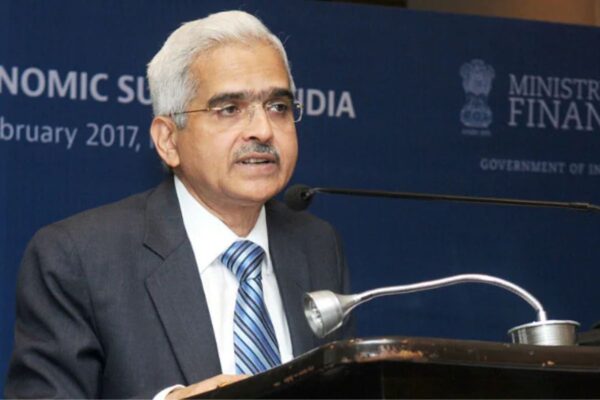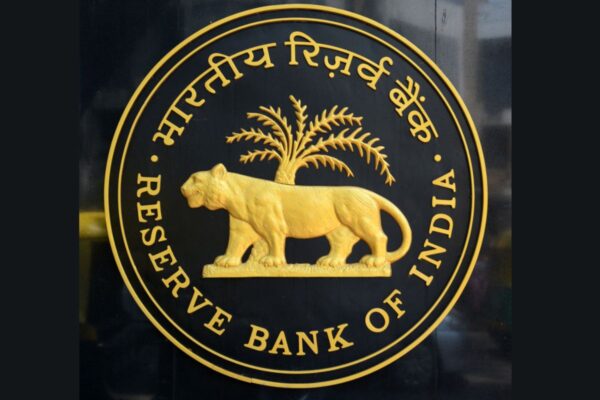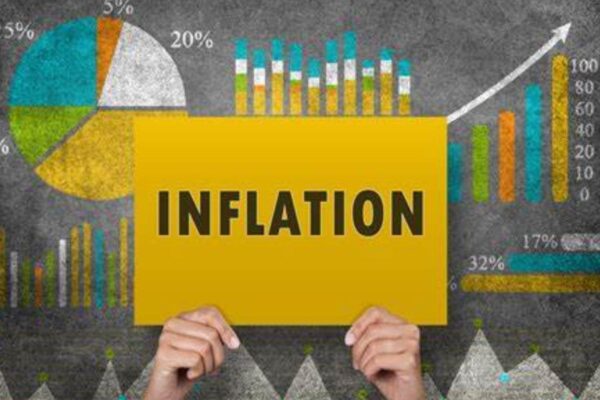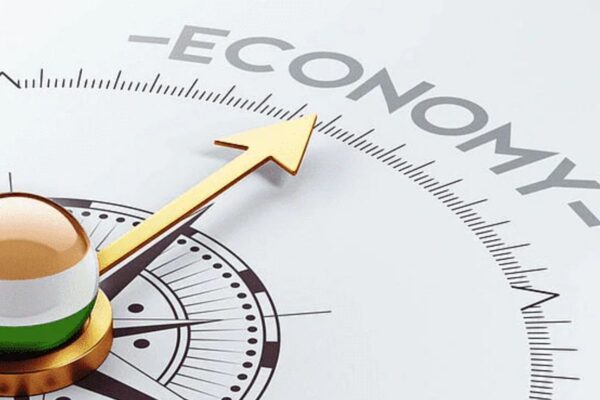RBI is trying to maintain the Economy by attacking pockets of Indians, from where Shaktikanta Das has studied Economics?

RBI is trying to maintain the economy by attacking pockets of Indians, from where ShaktiKanta das has studied economics.
Shaktikanta Das, governor of the Reserve Bank of India (RBI), stated that the RBI will continue to maintain adequate liquidity to sustain the economy, which is now experiencing severe challenges due to rising crude oil and important commodity prices as a result of Russia’s invasion of Ukraine.
In his speech to an industry gathering hosted by CII this evening, Das said that since the pandemic hit the economy in March 2020, the central bank has invested a staggering Rs 17 lakh crore in it. He also assured the industry that the RBI would keep the economy well-oiled with money.
According to the governor, gross non-performing assets have fallen to a record-low 6.5 per cent and the capital adequacy ratio for banks in the system is now at 16 per cent.
He asserted that despite the difficulties caused by the Russia-Ukraine war, the economy is in a stronger position because of the sizeable foreign exchange reserves and negligible current account difference.
He stated, “The RBI stands dedicated to handling any challenges on this front. “We are well-positioned to handle any financing-related problems,” the statement continued.
Shaktikanta Das: A history graduate, is the first non-economist governor of the RBI.

Shaktikanta Das, a former finance secretary and current finance commission member, has been named as the governor of the Reserve Bank of India, which surprised many people (RBI).
Shaktikanta Das is a former IAS officer with the government’s support, according to Union Finance Minister Arun Jaitley, who also noted that Das was a very senior and seasoned civil servant. He devoted nearly all of his professional life to managing the nation’s finances and economy.
The former IAS official from Tamil Nadu will lead India’s Central Bank for three years. However, a lot of people have voiced opposition to the selection of Das, who served as the government’s spokesperson on television during the demonetisation effort.
They have questioned his history and said that he is unqualified to run the RBI. Das received his undergraduate and graduate degrees in history from Delhi University, whilst Urjit Patel and Raghuram Rajan both held PhDs in economics. Das only ever took one academic course in the area, a financial management course from IIM Bangalore.
This is in no way comparable to Rajan or Patel, who were well-known economists before joining the RBI and left their posts unfinished.
The RBI governor since 1990 has been a career bureaucrat 14 times, but Das is the first non-economist to hold the position.
S Venkataraman, the 18th Governor of the RBI, who, like Das, was an IAS officer and had worked as a secretary in the finance ministry, was the last non-economist appointed to lead India’s Central Bank.
What RBI Governor Shaktikanta Das Said About India’s Economic Situation?

The Reserve Bank of India left the FY23 GDP prediction at 7.2% and the inflation projection for 2022–2023 at 6.7% unchanged.
Shaktikanta Das, governor of the RBI, stated on Friday that the financial system in India is still strong and that the central bank has maintained its FY23 GDP prediction at 7.2%. Indicators of the services sector’s high frequency, such as sales of commercial vehicles, toll collections, e-way bills, railway and port freight traffic, and freight traffic, all showed continued strength in June and July, he added.
The Indian financial system continues to be robust, Das said as he delivered the bimonthly monetary policy for August. This will aid the economy in emerging from the pandemic and the war’s effects in Europe’s shadows. The banking system is still profitable and well capitalised, but a deleveraged business sector bodes well for the recovery’s long-term viability.
He added that the state of the world economy has unavoidably affected the Indian economy. High inflation is a challenge that we have been battling. Despite sporadic corrections, financial markets have remained uncomfortable.
13.3 billion dollars worth of significant portfolio withdrawals has already occurred this financial year (up to August 3). Nevertheless, the IMF projects that India will have one of the fastest expanding economies between 2022 and 2023 thanks to its sound and durable fundamentals, with signs of inflation slowing down during the year.
According to Das, indices of improvement in urban demand include the manufacturing of durable goods for consumers, domestic air passenger traffic, and the sale of passenger cars. Rural demand indicators, however, gave off conflicting signals; while two-wheeler sales rose in June on a high base, tractor sales decreased.
According to him, investment activity is also increasing. In May, capital goods production increased by double digits for the second consecutive month, and capital goods imports also experienced strong growth in June. In July, the manufacturing PMI increased to an 8-month high. Even though it declined from a June peak that was the highest in more than 11 years, PMI services indicated steady growth in July.
In the future, rural consumption would increase if the southwest monsoon and Kharif sowing development were to be favourable. Urban spending is anticipated to benefit from the demand for contact-intensive services, stronger corporate performance, and increased consumer optimism.
“Investment activity should be supported by the rise in capacity utilisation, the government’s push for capital expenditures, and a significant increase in bank credit. According to our study, manufacturing companies anticipate continued growth in production volumes and new orders in Q2:2022-23, which is anticipated to continue through Q4,” he added.
The RBI governor noted that the global factors of prolonged geopolitical unrest, increased financial market volatility, tightening financial conditions globally, and the threat of a worldwide recession pose challenges to the domestic economy.
“The real GDP growth forecast for 2022–2023 is maintained at 7.2 per cent in light of all of these factors, with Q1 growth rates of 16.2 per cent, 6.2 per cent, 4.1 per cent, and 4.0 per cent, with risks being reasonably evenly distributed. According to him, the real GDP is expected to expand by 6.7 per cent in the first quarter of 2023–2024.
About Inflation

According to Shaktikanta Das, the south-west monsoon’s spatial and temporal distribution, global financial market developments, and changing geopolitical developments continue to impact the inflation trajectory significantly.
However, Das noted that there had been a little dip in global commodity prices since the last MPC meeting, particularly in the cost of industrial metals, as well as a slight decrease in the price of food. It is anticipated that supply-side government measures and increasing supplies from important producing nations will further reduce domestic edible oil prices.
If it continues, the recovery of wheat supply from the Black Sea region might assist in down global prices. Even though they are still significant, supply chain pressures are waning. If there is any unseasonal or heavy rainfall, it may affect the cost of food, particularly vegetables.
Additional pricing pressure may be brought about by a greater transmission of input cost pressures to selling prices throughout the manufacturing and service sectors. A continuously high cost of living could also result in higher salaries and more price hikes, especially if firms’ pricing power grows, he added.
The RBI governor stated, “Taking into account these factors, and on the assumption of a normal monsoon in 2022 and an average crude oil price (Indian basket) of $105 per barrel, inflation is projected to be 6.7% in 2022–23, with Q2 inflation of 7.1%, Q3 inflation of 6.4%, and Q4 inflation of 5.8%, with risks being evenly distributed. A 5.0% CPI inflation rate is anticipated for Q1:2023–2024.
On the Outside Sector
He asserted that India’s foreign sector had endured despite recent global spillovers. Due to growing global commodity prices, exports of goods rose from April to July 2022 while imports hit a record high. As a result, the merchandise trade imbalance rose to US$ 100.0 billion between April and July 2022.
Despite widespread unrest, the demand for service exports, particularly IT services, held steady in Q1. According to preliminary data, this was the case in Q1. In Q1:2022-23, exports of travel and transportation services rose year over year as well. Das went on.
Net foreign direct investment (FDI), which is a measure of external finance, was high, totalling $13.6 billion in the first quarter of 2022-2023 compared to $11.6 billion in the same period the previous year. Foreign portfolio investment began to become positive in July 2022 after remaining in exit mode from April to June 2022.
The macroeconomic and financial stability of the Indian economy is an Island: Shaktikanta Das, Governor of the RBI

Das said to reporters at the post-policy press conference, that the Indian economy is an island of macroeconomic and financial stability in a sea of intense turmoil and uncertainty.
Shaktikanta Das, governor of the Reserve Bank of India, claimed on Friday that despite two “Black Swan” catastrophes and several shocks, the Indian economy remains a haven of stability. Das said to reporters at the post-policy press conference, that the Indian economy is an island of macroeconomic and financial stability in a sea of intense turmoil and uncertainty.
Despite two Black Swan events coming one after the other and several shocks, he said that growth resilience, macroeconomic stability, and financial stability are all being seen. An unanticipated occurrence that has unfavourable implications is referred to as a “Black Swan event.” Das alludes to the two occurrences as Black Swans were not officially acknowledged.
The world economy has been significantly impacted by recent events like the conflict between Russia and Ukraine and the coronavirus pandemic. The Monetary Policy Committee (MPC) increased the repo rate by 50 basis points to 5.40 per cent on Friday.
It was also decided to continue focusing on the withdrawal of accommodations to ensure that inflation stays within the target while fostering growth. In the future, monetary policy will be calibrated, measured, and flexible, according to the governor.
He admitted that inflation has reached its pinnacle and would soon begin to decline, but he emphasized that it is still too high. Additionally, he said that the central bank could regulate and manage the country’s current account deficit.
The pace at which the RBI aims to return the medium-term inflation rate to 4% will determine how soon rates will rise in the future.
The global economy is averting and moving into a recession depending on which market one examines. Some people would compare this to the famous Schrodinger’s Cat, which is capable of being both dead and alive at the same time.
Can the monetary policy be both loose enough to permit excessive inflation and tight enough to trigger an economic downturn? The recent string of policy rate increases suggests that the world’s financial conditions are sufficiently tight, but they also appear to be sufficiently loose when one considers the amount of money present in the economies.
Policy rates are possibly the only element that has nearly totally returned to normal in an otherwise unusual time. If we look closely, we can see that while Central Banks on several continents appear to be battling inflation by raising interest rates, each action is being motivated by a different objective.
In essence, the US Federal Reserve is attempting to restore the reputation for combating inflation that it has fought so arduously to establish over the past 40 years.
Amid someone else’s war, the ECB and BoE are fighting for their financial survival. China’s economic policies are essentially a battle against its Covid policies, which may be seen as nearly a self-goal. Not to mention, there is a significant likelihood that the Bank of Japan is advocating for anything of which it is unaware.
We frequently overlook how unpredictable and unsafe the world still is while sitting in India. In contrast to most other economies, India has managed a range of six sigma challenges surprisingly successfully.
India is only making a little growth sacrifice to battle import-led inflation, while other countries are incurring large expenditures to cover the excesses of their economic support measures. This demonstrates how quickly and skilfully our policymakers have handled these incredibly dangerous times.
The MPC today increased the policy rates by 50 bps, as was widely anticipated, and maintained its emphasis on the withdrawal of accommodation. The MPC maintains its FY23 GDP growth prediction at 7.2 per cent because it is upbeat about India’s growth prospects. The MPC maintained its FY23 CPI prediction at 6.7 per cent despite the decline in global commodity prices, noting the geopolitical unpredictability.
We anticipate such rate measures in the future as the withdrawal of accommodations remains a top priority. How quickly RBI wants to return the medium-term inflation rate to its target of 4 per cent will determine the magnitude and frequency of future rate increases. In our opinion, the MPC will pursue a gradual approach to its future policy adjustments so long as the trend of inflation continues its downward course.
Liquidity normalisation will advance into FY24 at a moderate pace as opposed to front-loaded rate measures. We think that the policy repo rate in India should reach its high of around 5.75 per cent, given the deflationary nature of the global recession and its accompanying disinflationary impulse.
Policy tightening has caused a demand downturn, leading to the anticipation that global inflation will peak soon. This is comparable to only treating the symptom. To address the underlying causes of inflation, governments and policymakers will need to work toward increasing commodity supply, addressing challenging geopolitical situations, and gradually reducing trade barriers.
These problems won’t be solved for many years, and any sudden growth spurt during that time would inevitably cause inflation. Therefore, policymakers will feel pressure to maintain higher rates for longer. Additionally, higher policy rates must make up for the hasty removal of surplus funds from the system. Therefore, chances of a broad-based, non-inflationary growth rebound remain slim even if inflation peaks.




